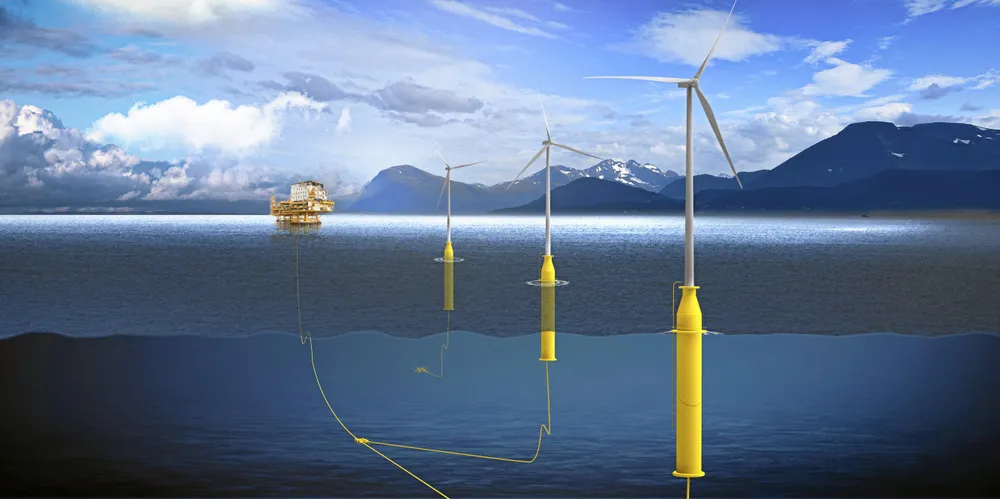Scotland tests waters for weaving floating wind-powered oil projects into ScotWind tender
Government launches consultation to include leasing for innovative sub-100MW projects to help decarbonise hydrocarbon production in North Sea

The Scottish government has kicked off a new consultation with industry to explore weaving in projects to its sector marine plan for the ScotWind leasing round that would use offshore wind to power operating oil & gas platforms, as part of the country’s push toward wider net zero goals.
Green is the new black. Subscribe to Accelerate
Get the market insight you need into the global oil & gas industry's energy transition – from the new newsletter from Upstream and Recharge. Sign up here
“The Scottish government is committed to ensuring secure, reliable and affordable energy supplies within the context of long-term decarbonisation of energy generation. Continued growth of the renewable energy sector in Scotland is an essential feature of the future clean energy system and a potential key driver of economic growth,” the government said in a Marine Scotland scoping document.
“Offshore wind is a large-scale technology with the potential to play a pivotal role in Scotland’s energy system over the coming decades. The development of technologies such as floating wind, which offer scope for development in deeper water, have significant potential to contribute offshore wind energy supply at affordable prices.
“Floating technology is particularly well suited to the deeper water abundant around Scotland and in the vicinity of oil and gas infrastructure.”
An outgrowth of the development of Scotland’s 2020 Sectoral Marine Plan (SMP), which “identified a possible need to re-examine the planning process to allow more targeted projects to progress with the specific focus of seeking to electrify oil and gas infrastructure”, the scheme would look to deliver “viable and sustainable offshore wind projects in areas identified as suitable for future development”, with an eye on environmental, socio-economic and spatial considerations, the government said.
“Oil and gas extraction from the North Sea has been a core feature of Scottish waters and the marine environment for multiple decades,” said the government. “Though the oil & gas sector has been transformational for Scotland, and the UK, our wider commitments to net zero encompass these sectors and will mean significant changes are required to meet the Scottish and UK deadlines.
“Offshore wind may not be the only answer, carbon capture usage and storage and direct power options from shore, in addition to offshore turbines connected to oil and gas assets may all play a role in meeting these commitments. However, offshore wind is a proven and reliable source of green energy and with technological advances in floating wind, it offers a direct, sustainable and importantly, a timely solution.”
Scotland’s 2020 SMP for offshore wind energy spotlighted 15 sites that would meet INTOG criteria, as part of the ScotWind leasing process, awards for which are slated to be announced early in 2022.
(Copyright)